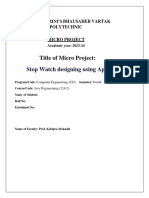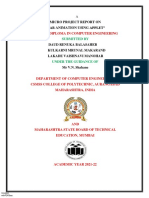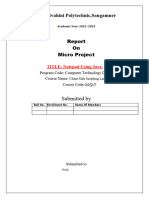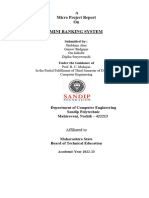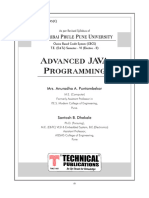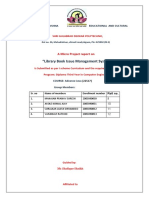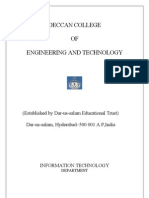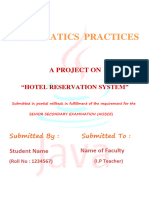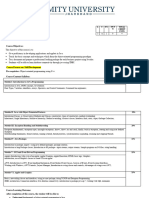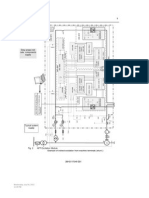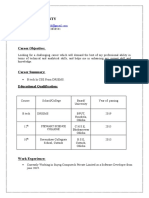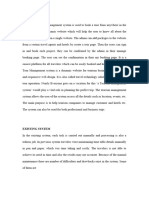0% found this document useful (0 votes)
71 views18 pagesJava Microproject Report
The document is a micro project report template for a stopwatch applet designed using Java. It includes sections for the project proposal, rationale, aim, methodology, and actual methodology followed. The methodology section includes a flowchart showing how the Applet class extends other classes like Component, Container and Panel. It also includes sample code for a Clock class that extends Applet and implements Runnable and ActionListener interfaces to create the stopwatch functionality.
Uploaded by
umairkhan1559Copyright
© © All Rights Reserved
We take content rights seriously. If you suspect this is your content, claim it here.
Available Formats
Download as DOCX, PDF, TXT or read online on Scribd
0% found this document useful (0 votes)
71 views18 pagesJava Microproject Report
The document is a micro project report template for a stopwatch applet designed using Java. It includes sections for the project proposal, rationale, aim, methodology, and actual methodology followed. The methodology section includes a flowchart showing how the Applet class extends other classes like Component, Container and Panel. It also includes sample code for a Clock class that extends Applet and implements Runnable and ActionListener interfaces to create the stopwatch functionality.
Uploaded by
umairkhan1559Copyright
© © All Rights Reserved
We take content rights seriously. If you suspect this is your content, claim it here.
Available Formats
Download as DOCX, PDF, TXT or read online on Scribd
/ 18
